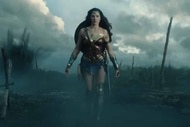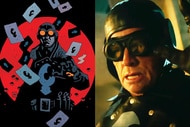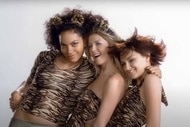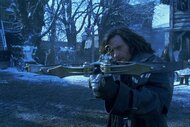Create a free profile to get unlimited access to exclusive videos, sweepstakes, and more!
Pulp: What happens to cowboys who outlive their prime? They move to NYC and fight Nazis
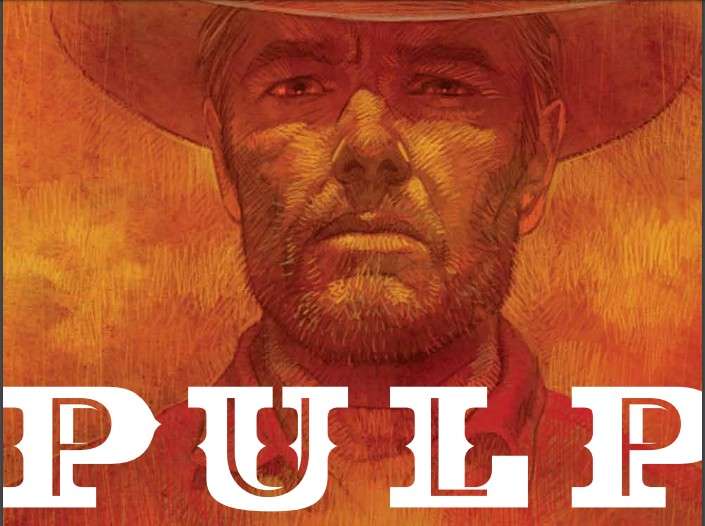
Before there were comic books there were pulps. Pulp magazines, popular around the turn of the 20th century through the 1950s, ran the gamut from gory horror to romance to superhero tales and back again. But for a long time, if you were reading pulps, it typically meant you were reading stories of heroism and villainy in the Old West. Browse through the cheaply printed pages and you might find a mysterious stranger riding into a forgotten, broken-down town, only to rescue its inhabitants from any number of thieves, murderers, and bandits.
With Pulp, set for release on July 29 via Image Comics, writer Ed Brubaker and artist Sean Phillips dug into a relatively unexplored aspect of those old westerns. Brubaker and Phillips ask: What happens to the villains who manage to get away? What happens when they grow old and leave the Wild West? Set against the backdrop of the economic hardships and general unrest of the late 1930s, Pulp is a meta-crime drama fit for modern times.
The original graphic novel follows Max Winters, a pulp writer in 1930s New York, who “finds himself drawn into a story not unlike the tales he churns out at five cents a word — tales of a Wild West outlaw dispensing justice with a six-gun,” according to a release from Image. Max must confront his past along with the likes of bank robbers and Nazi spies. Recently, Brubaker spoke with SYFY WIRE about Pulp, what inspired his most recent indie work, and how history tends to repeat itself.
This story takes place in a very interesting time in America. I'm wondering if the current state of America had any role in your choice.
Oh, for sure, but it came kind of organically in the process, too. Pulp started because Sean asked me to think of an idea for a western because he wanted to draw one, and while I was trying to figure it out, I started thinking: "What happens if you don't go out in a blaze of glory when you're young?" And suddenly I had this idea for a story about an old ex-outlaw writing pulp stories and living in 1930s New York during the Depression. So once I was there and figuring out what the story was, who this guy was, and what he would do, I thought about the Nazi rally in Madison Square Garden and the big protest outside of it. And, how in a lot of pulp fiction in the '40s and '50s, the Nazis were often the bad guys ... So it was like pieces just falling into place, really.
But they say when we write about the past we're always really writing about the present. Still, it's horrifying to me that Nazis in America are again relevant. As is the Great Depression.
Can you tell me a little bit about the research you did for this book? Were there any things you found that surprised you in your research?
I was surprised how many western pulps there were, and that they lasted longer than a lot of the other pulp genres. Most of the pulps I've ever looked at were things like Doc Savage or Black Mask or The Shadow, but the westerns outnumbered and outsold all of them in the long run, and lasted right up to the advent of paperback originals in the '50s, which replaced the pulps.
I also read some more about the Nazi Bund — the American Nazi movement — including a great book about an agent who broke a big Nazi spy ring in the States, which is where I learned about how much cash some Americans were sending to Germany back then. But they were also infiltrating the military and our harbors, munitions factories, and plotting a big planned strike. I hadn't known much about that, before, and it really does sound like the stuff of a pulp novel.
I had done reading about a lot of this stuff over the years for various other projects, like when I wrote Captain America, so I knew enough about that time period and what was happening to really mostly focus on Max, and then the old man he makes friends with, who is also from the old Wild West days.
Max is such an everyday hero, and I imagine that a lot of people today feel like him. Can you talk about his creation? Is he based on anyone?
Not really anyone specifically. His drives are mostly mine. To take care of your family and provide for them, to wish the world wasn't a f***ing horror show that you feel helpless in the face of.
But where Max's history came from, there were two different men who claimed to be the "real Butch Cassidy" at various times in the 20th century, and at least one "real Jesse James" that I can recall being debunked not long past. I remember reading about these men a long time ago, and to me, even though they were exposed as fake, that idea of a forgotten Wild West outlaw still being alive was really evocative.
I loved that idea of taking that kind of an outlaw past their prime story, and putting it in a different place and time — Max is past his prime, and the world has moved on without him to the point he can barely recognize it. And you know, I think that's a feeling we can all identify with just looking back 10 years ago, really.
Can you talk about working with Sean Phillips on this book? It's such a great look and style.
Sean and I have been making books together for about 20 years now, so we're a pretty tight partnership by now — his son Jacob is even our colorist now. He never wants to know what's coming next in a story whenever I send him pages, and he's been that way all along, and he always surprises me. There were some scenes in here, like the stagecoach robbery, where I thought he'd kill me for making him draw that, and it's one of the best pages in the book. He's just a joy to work with, and never misses a deadline, which makes him like a unicorn, I think.
Plus he wanted to draw a western and I gave him a pulp story in Depression-era New York instead, so he had to do a ton of research and draw buildings and cars when he was probably hoping for 50 pages of desert — and it's still one of the most beautiful things he's ever drawn.
![Pulp by Ed Brubaker and Sean Phillips [Credit: Image Comics]](/sites/syfy/files/pulp2222.jpg)
![Pulp by Ed Brubaker and Sean Phillips [Credit: Image Comics]](/sites/syfy/files/pulp444.jpg)
![Pulp by Ed Brubaker and Sean Phillips [Credit: Image Comics]](/sites/syfy/files/pulp3333.jpg)






